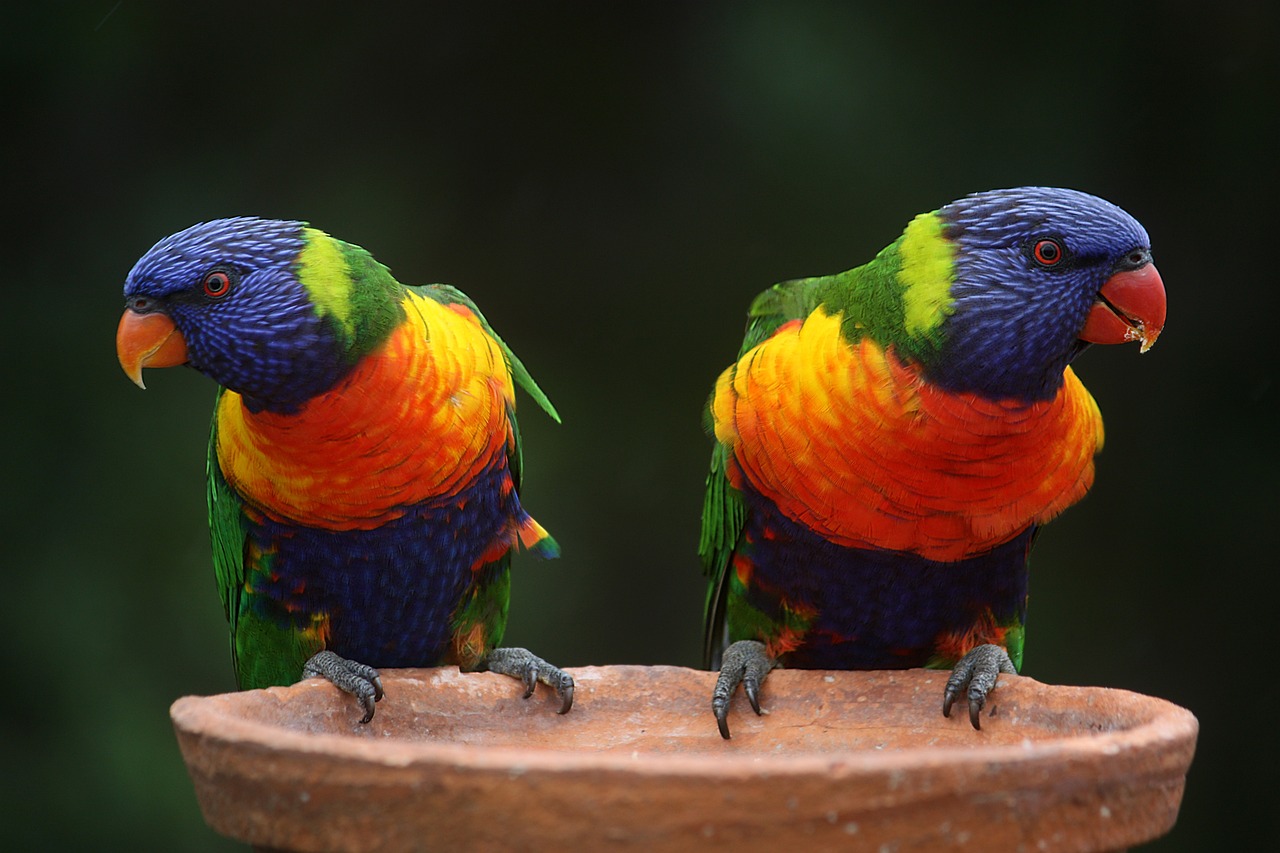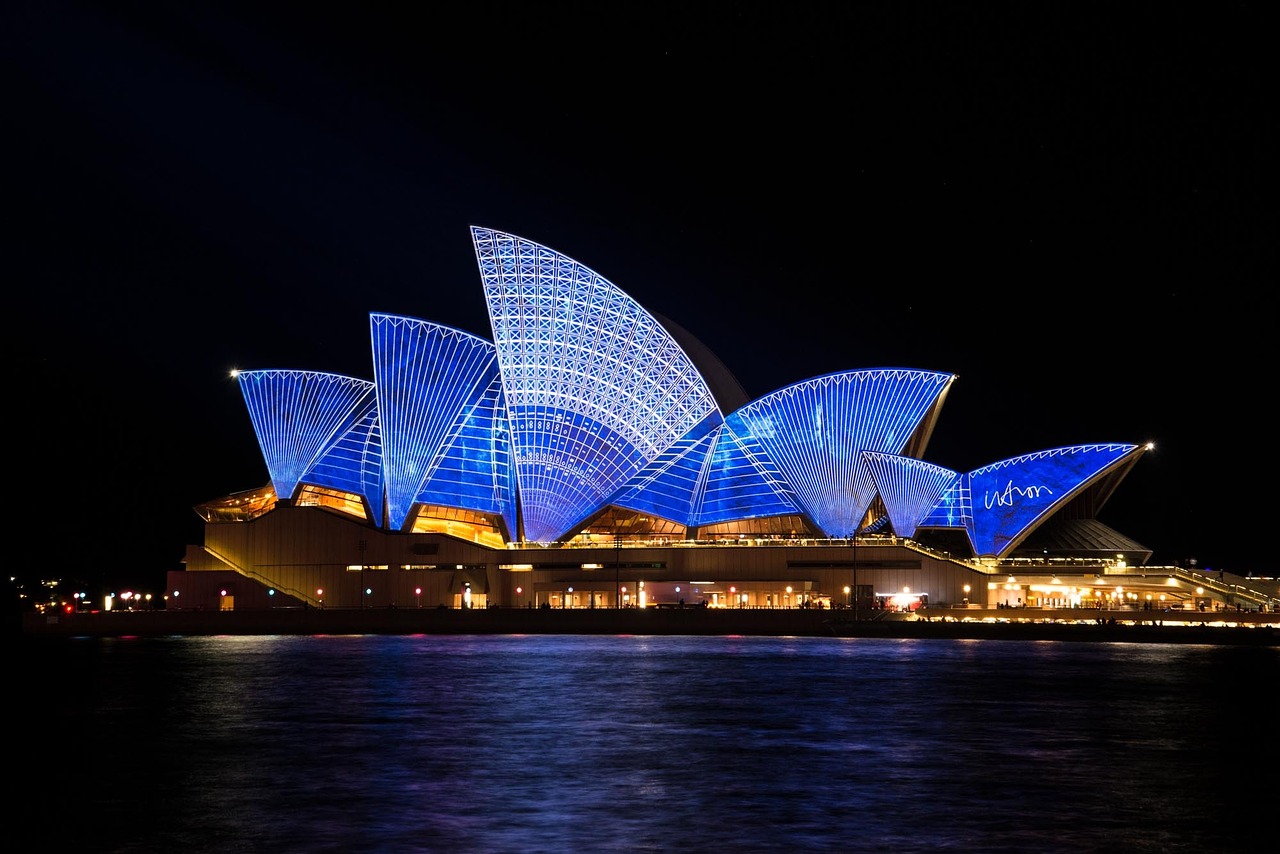Reliving the Revolution: The Cultural Renaissance of the 1960s

The Surge of Creativity
The 1960s marked a pivotal point in Australian history, characterized by a vibrant cultural renaissance. Artists, musicians, and writers began to explore new themes and express their unique Australian identity. What was your favorite form of artistic expression during this era?
Music: The Heartbeat of a Generation
Music became a powerful vehicle for change. Iconic bands like The Seekers and The Easybeats emerged, bringing a fresh sound that resonated with the youth. Did you attend any concerts or festivals during this time?
Literature: Voices of Change
Literature flourished as authors began to challenge societal norms. Writers such as Patrick White and Judith Wright gained prominence, exploring themes of identity and belonging. What books influenced your perspective in the 60s?
Art: A New Wave
The visual arts saw a surge in innovative styles, with movements like Modernism and Aboriginal Art gaining recognition. Artists such as Fred Williams and Margaret Preston depicted the Australian landscape in ways that had never been seen before. Which artworks captured your imagination?
Fashion: A Bold Statement
Fashion in the 1960s was all about self-expression. The rise of the miniskirt and bold patterns reflected the changing attitudes of society. What fashion trends did you embrace during this decade?
Film and Television: Reflecting Society
Australian cinema began to gain international attention, with films like Picnic at Hanging Rock challenging traditional narratives. Television also became a staple in households, bringing news and entertainment directly to viewers. Were there any shows or films that left a lasting impression on you?
Social Movements: A Call for Change
The 1960s were not just about culture; they were also about activism. Movements for Indigenous rights and against the Vietnam War gained momentum. How did these movements impact your life or community?
Legacy of the 1960s
The cultural renaissance of the 1960s laid the groundwork for future generations. It was a time of experimentation and boldness that reshaped Australian identity. Reflecting on this era, what do you think its most significant impact was?
From Surf to Soul: The Soundtrack of Australia’s Transformation

In the vibrant tapestry of the 1960s, Australia experienced a remarkable transformation, reflected in its music. This decade saw a fusion of cultures and genres, echoing the spirit of change and freedom. Join us as we explore the soundtrack of this golden era, from the surf rock that captured the coastline to the soulful rhythms that resonated in the hearts of many.
The Rise of Surf Music
The 1960s began with a wave of surf music, a genre that embodied the carefree spirit of Australian youth. Bands like The Beach Boys from America inspired local acts, leading to the emergence of homegrown talent.
- The Shadows – Known for their instrumental hits, they became a defining sound of the surf scene.
- The Atlantics – Their hit “Bombora” became an anthem of Australian surf culture.
- The Delltones – Fusing harmonies with surf themes, they were a staple in the music of the time.
Echoes of Rock and Roll
As surf music flourished, so did the rock and roll scene. The influence of British bands created a new wave of excitement among Australian musicians.
- The Easybeats – With their hit “Friday on My Mind,” they brought a unique sound that captivated audiences.
- Johnny O’Keefe – Often referred to as the ‘father of Australian rock,’ his energetic performances were legendary.
- The Seekers – Their folk-rock sound and hits like “Georgy Girl” achieved international acclaim.
Transition to Soul and Rhythm & Blues
As the decade progressed, soul music began to seep into the Australian soundscape, bringing with it a powerful rhythm and emotional depth.
- Max Merritt & The Meteors – Their blend of soul and rock made waves, especially with the classic “Slippin’ Away.”
- Little Pattie – A young star who brought a fresh voice to the soul genre, appealing to the youth.
- The Black Sorrows – Later in the decade, they represented the growing interest in blues and soul.
The Cultural Impact of Music
Music in the 1960s was more than just entertainment; it served as a backdrop to social change and cultural evolution.
| Aspect | Description |
|---|---|
| Social Change | Music reflected the shifting attitudes towards issues like civil rights and anti-war sentiments. |
| Fashion | Musicians influenced styles, from surf shorts to mod suits, shaping the youth culture. |
| Community | Local gigs and festivals became gathering places, uniting diverse groups. |
Legacy of the 1960s Soundtrack
The music of the 1960s continues to resonate today, influencing generations of artists and listeners alike. Its legacy is evident in the ongoing celebration of Australian music festivals and the enduring popularity of classic hits.
As we reflect on the golden era of the 1960s, it is clear that the soundtrack of Australia’s transformation was a rich blend of surf, rock, and soul. Each note played during this decade tells a story of change, unity, and creativity that still echoes in our hearts today.
A Tapestry of Change: Fashion and Identity in the 1960s

Fashion as a Reflection of Change
As the 1960s unfolded, Australia found itself in a whirlwind of transformation, both socially and culturally. Fashion became a vibrant canvas on which the spirit of the decade was painted. Can you recall the styles that defined your youth? From the chic elegance of the early part of the decade to the bold statements made by the end, each trend told a story of evolving identity.
The Rise of Youth Culture
The emergence of a distinct youth culture was palpable during this time. How did you express your individuality through fashion? The Beatles and the British Invasion influenced not just music but also the way young Australians dressed. The iconic mod style, with its tailored suits and geometric patterns, became a staple for many. Meanwhile, the free-spirited vibes of the hippie movement introduced a more relaxed, colorful aesthetic.
Feminine Fashion: Liberation and Expression
Women’s fashion underwent radical changes. The shift from the conservative styles of the 1950s to the liberation of the 1960s was significant. Do you remember your first mini skirt? The introduction of the mini skirt symbolized not just a fashion trend, but a statement of independence. Alongside this, the rise of mod fashion and the influence of designers like Mary Quant inspired women to embrace their bodies and express their identities boldly.
Men’s Fashion: A New Era of Style
Men’s fashion also experienced a transformation. The traditional suits began to give way to more relaxed and expressive styles. Did you ever try bell-bottoms or paisley prints? The adoption of casual wear, such as turtlenecks and flared trousers, marked a shift towards comfort and individuality among men.
Indigenous Fashion and Cultural Identity
Throughout the 1960s, Indigenous Australians began to reclaim their cultural identity through fashion. Traditional garments and motifs found their way into mainstream fashion, creating a unique blend of modern and traditional styles. How did these influences shape your perception of Australian culture?
Fashion Shows and the Media
The rise of fashion shows and media coverage in magazines brought new trends to the forefront. Did you have a favorite magazine that inspired your style? Publications showcased the latest styles, making fashion accessible and inspiring to the masses. Television also played a role, bringing fashion into living rooms across the country.
Final Thoughts: The Legacy of the 1960s
Reflecting on the 1960s, one cannot help but recognize the profound impact fashion had on identity. What lasting impressions did the fashion of your youth leave on you? The decade was a tapestry woven with threads of change, self-expression, and cultural pride, setting the stage for future generations to explore their identities through the lens of fashion.
Voices of Freedom: The Rise of Activism and Social Movements
The 1960s was a transformative decade for Australia, marked by a surge in activism and social movements that echoed the aspirations of freedom and equality. As you reminisce about this vibrant era, let’s explore the voices that shaped a nation, the struggles fought, and the victories won.
The Seeds of Change
The decade began with a growing awareness of social injustices. The Indigenous rights movement gained momentum, as Aboriginal Australians started to demand recognition and equality. The 1967 Referendum was a significant milestone, where over 90% of voters supported changes to the Constitution to allow the federal government to make laws for Aboriginal people. Can you recall how this moment felt in your community?
Women’s Liberation
Simultaneously, the women’s liberation movement emerged, advocating for gender equality and women’s rights. Women began to challenge traditional roles, seeking equal pay, reproductive rights, and the right to work without discrimination. The Women’s Electoral Lobby was formed, empowering women to influence political agendas. What changes did you witness in the lives of women around you during this time?
The Anti-Vietnam War Movement
Another powerful voice of activism came from the anti-Vietnam War movement. Many young Australians protested against conscription and the war itself, organizing rallies and sit-ins. The iconic 1969 Moratorium marches saw thousands of Australians take to the streets. How did these protests resonate with you, and what were your thoughts on the war?
Environmental Awareness
The 1960s also marked the beginning of the environmental movement. Concerns about pollution, deforestation, and the preservation of natural beauty began to surface. Activists rallied to protect iconic sites such as the Franklin River in Tasmania. Did you participate in any local initiatives to promote environmental awareness?
Cultural Shifts
With activism came a shift in cultural norms. Music, art, and literature became avenues for expressing dissent and promoting change. The rise of protest songs and artists who spoke out against injustice brought people together. What songs or artists do you remember that inspired you during this time?
Legacy of Activism
The activism of the 1960s laid the groundwork for future movements, influencing generations to come. The voices of freedom that emerged during this decade are still echoing in today’s struggles for equality and justice. How do you feel the activism of your time has shaped the Australia we live in today?
As we reflect on the rise of activism and social movements in 1960s Australia, it’s essential to recognize the courage of those who stood up for change. Their voices continue to inspire us to strive for a more equitable society. What stories do you have from this golden era that you would like to share?
Memories in Motion: Iconic Films and Television That Shaped a Generation
Iconic Films of the 1960s
As we reflect on the 1960s, let’s journey back to the silver screen and explore some of the films that left an indelible mark on Australian culture.
“The Sundowners” (1960) – A tale of a family of drovers traveling through the Australian outback.
“The Lighthorsemen” (1987) – Although released later, its story roots trace back to the heroic deeds of the Australian Light Horse during World War I, resonating with the patriotic spirit of the time.
“Wake in Fright” (1971) – An unsettling exploration of Australian identity and isolation, released just after the peak of the 60s.
Television Shows That Captivated Audiences
The 1960s was also a pivotal time for television in Australia, with shows that not only entertained but also reflected societal changes.
“The Adventures of the Bush Patrol” – A show that showcased the rugged outback and the adventures of the bushmen.
“Homicide” – Australia’s first police drama that aired in 1964, setting the stage for future crime shows.
“The Mavis Bramston Show” – A satirical sketch comedy that provided social commentary on contemporary issues.
How Films and Television Reflected Society
During the 1960s, films and television were not just entertainment; they were mirrors reflecting the societal changes occurring in Australia.
| Film/Show | Theme | Impact |
|---|---|---|
| The Sundowners | Family and Tradition | Highlighted the struggles of rural life. |
| The Adventures of the Bush Patrol | Adventure and Nature | Encouraged appreciation for the Australian landscape. |
| Homicide | Crime and Justice | Opened discussions about law and morality. |
Engaging with the Era
As you think back to the films and television shows of your youth, consider the following questions:
What was your favorite film from the 1960s, and why did it resonate with you?
Which television show did you look forward to watching each week?
How did these films and shows influence your view of Australian culture?
These memories are not just fond recollections; they are the threads that weave together the fabric of our shared history and identity.
The Golden Landscape: Exploring Australia’s Natural Wonders in the 1960s
Introduction to Australia’s Natural Beauty
In the vibrant decade of the 1960s, Australia was not only a land of cultural transformation but also a treasure trove of breathtaking natural wonders. From the stunning beaches to the vast outback, every corner of this beautiful continent offered something unique. Let’s embark on a journey to explore the golden landscapes that defined this era.
The Iconic Great Barrier Reef
Imagine diving into the crystalline waters of the Great Barrier Reef, surrounded by a kaleidoscope of marine life. In the 1960s, this natural wonder was just beginning to gain recognition as one of the world’s most spectacular ecosystems. Did you know that back then, the reef was a relatively untouched paradise? As we reminisce, picture yourself snorkeling among colorful corals and vibrant fish.
The Majestic Uluru
Uluru, also known as Ayers Rock, was a sacred site for the Indigenous Australians and a breathtaking sight for visitors. In the 1960s, its cultural significance began to be acknowledged more widely. Can you recall the stunning hues of the rock at sunrise and sunset? It was a spectacle that left many in awe, capturing the essence of Australia’s natural beauty.
Coastal Wonders: Bondi Beach
The 1960s also marked a surge in popularity for Australia’s beaches, with Bondi Beach becoming a symbol of Australian lifestyle. Picture yourself lounging on the sandy shores, watching surfers ride the waves. This iconic beach wasn’t just a place for relaxation; it was a hub of social activity and a testament to Australia’s love for the sun and surf.
The Lush Daintree Rainforest
Venture into the Daintree Rainforest, one of the oldest rainforests in the world. In the 1960s, exploration of this lush landscape was starting to become popular. Imagine walking through the towering trees, surrounded by unique flora and fauna. It was a time when the beauty of nature was celebrated, and conservation efforts were beginning to take root.
Conclusion: A Reflection on Nature’s Splendor
The 1960s were a golden era for Australia’s natural wonders, a time when the country’s landscapes were not only admired but also cherished. As we reflect on these memories, let’s remember the importance of preserving these treasures for future generations. What are your favorite memories of Australia’s natural beauty from this time? Share your thoughts and let’s celebrate the echoes of a golden era together.
Building the Future: Economic Growth and Urban Development
Economic Transformation in the 1960s
The 1960s marked a pivotal time for Australia, characterized by robust economic growth and rapid urban development. The post-war era had set the stage, but it was in this decade that the nation truly began to flourish. Can you recall what you were doing during this transformative time? Many Australians were experiencing a newfound prosperity that shaped their lives.
Key Factors Driving Economic Growth
Several factors contributed to the economic boom:
Industrial Expansion: With manufacturing on the rise, Australia saw a surge in job opportunities.
Population Growth: Immigration policies welcomed waves of new residents, enhancing cultural diversity and labor supply.
Investment in Infrastructure: Significant investments in roads, railways, and ports facilitated trade and connectivity.
Urban Development: The Rise of Cities
As the economy thrived, Australian cities began to evolve. Have you ever walked through the streets of a 1960s city? Here are some notable developments:
| City | Key Development | Impact on Residents |
|---|---|---|
| Sydney | Construction of the Sydney Opera House | Boosted tourism and cultural pride |
| Melbourne | Expansion of suburban areas | Increased housing availability and community growth |
| Brisbane | Development of public transport systems | Improved mobility and reduced congestion |
The Impact of Economic Growth on Daily Life
With the economic surge, many Australians enjoyed a higher standard of living. Do you remember the excitement of new products and services? From household appliances to cars, consumerism became a defining feature of the era.
Challenges Amidst Prosperity
Despite the growth, challenges remained:
Environmental Concerns: Urban sprawl led to increased pollution.
Housing Affordability: Rapid development often outpaced affordable housing options.
Reflecting on the Legacy
The 1960s set the foundation for modern Australia. How do you think these changes influenced your life? The economic growth and urban development of this era continue to resonate today, making it a significant chapter in Australia’s history.
A Culinary Journey: The Flavors That Defined an Era
Introduction to the 1960s Culinary Landscape
As we step back into the vibrant decade of the 1960s, it’s impossible to ignore the culinary transformations that shaped Australia. This period was marked by the introduction of diverse flavors, reflecting the multicultural influences that began to take root. Take a moment to recall the dishes that brought families together and defined gatherings in your own home.
The Rise of Italian Cuisine
One of the most significant influences was Italian cuisine. With the wave of post-war immigration, Italian restaurants began to flourish. Can you remember the first time you tasted a homemade lasagna or a delicious pizza? Families would often gather around the table, sharing stories while savoring these hearty meals. The simple ingredients—pasta, tomatoes, and cheese—became staples in Australian households.
Asian Influence Begins
As the decade progressed, the culinary scene saw a shift towards Asian flavors. Chinese restaurants opened their doors, bringing dishes like sweet and sour pork and fried rice into the mainstream. Do you recall the excitement of dining out for the first time at a Chinese restaurant? The vibrant colors and unique tastes were a new adventure for many.
The Advent of Fast Food
The 1960s also heralded the beginning of the fast-food phenomenon. The first Mcdonald’s opened its doors in Australia, introducing the iconic cheeseburger and fries. What was your first fast-food experience? The convenience of quick meals appealed to busy families and teenagers alike, changing the landscape of dining forever.
Traditional Australian Dishes
Despite these new influences, traditional Australian dishes remained popular. Think back to the comforting flavors of a classic meat pie or Lamingtons. These treats were often found at local bakeries and were a staple for many afternoon teas. How did these dishes bring a sense of nostalgia to your gatherings?
Exploring Local Ingredients
During this era, there was also a growing appreciation for local produce. Farmers’ markets began to thrive, allowing families to access fresh fruits and vegetables. Can you remember the taste of a sun-ripened stone fruit or the crunch of freshly picked vegetables? This connection to local ingredients encouraged families to cook together and embrace seasonal eating.
Conclusion: A Flavorful Legacy
The 1960s were a time of culinary exploration, where traditional Australian flavors mingled with new global influences. Reflect on your experiences during this vibrant decade. What dishes do you still cherish? How did the flavors of the 1960s shape your culinary journey? Let’s celebrate the rich tapestry of tastes that defined an era, and keep these memories alive.
Sports and Spectacle: Celebrating Athletic Achievements and Community Spirit
Introduction to the 1960s Sporting Landscape
Australia in the 1960s was a vibrant tapestry woven with the threads of sporting excellence and community pride. This decade witnessed a golden era of sports that not only showcased extraordinary athletic achievements but also fostered a sense of unity among Australians.
Key Sporting Events that Defined the Decade
Several landmark events marked this era. Let’s delve into some of the most memorable:
| Year | Event | Significance |
|---|---|---|
| 1960 | Rome Olympics | Australia won 3 gold medals, showcasing its rising talent. |
| 1962 | Commonwealth Games | Held in Perth, it was a celebration of national pride with over 1,000 athletes participating. |
| 1965 | The Ashes Series | A historic cricket series that reinforced Australia’s dominance in the sport. |
| 1966 | World Cup of Cricket | Australia emerged as a formidable force in international cricket. |
Celebrating Athletes: Icons of the 1960s
The 1960s were defined by remarkable athletes who became household names. Don Bradman, though retired, continued to be a cricketing legend, while swimmers like Dawn Fraser and Graham Thomas brought global attention to Australian swimming.
Community Spirit through Sports
Sport in the 1960s was more than just competition; it was about community. Local clubs thrived, and families gathered around to support their teams. Football, Rugby, and Cricket became the glue that held communities together. Can you recall the excitement of local matches or the thrill of cheering for your favorite team?
Interactive Reflection
Think back to your own experiences during the 1960s. Did you attend any memorable sporting events? Perhaps you participated in local competitions or supported your children in their athletic pursuits. Share your stories and reminisce about the joy that sports brought to your community.
The 1960s in Australia were a celebration of sport, showcasing not only athletic achievements but also the strong community spirit that sports fostered. As we reflect on this golden era, let’s remember the laughter, the cheers, and the unforgettable memories created through sports.
Legacy of Love: Family Dynamics and Relationships in a Changing World
Exploring Family Bonds
As we journey back to the 1960s, let’s reflect on how family dynamics shaped our lives. Picture yourself in a cozy living room, where stories were shared over tea, and laughter echoed through the halls. What memories come to mind?
The Changing Landscape
The 1960s was a time of significant change. With the rise of the youth culture, traditional family structures began to evolve. How did your family adapt to these shifts? Some families embraced change, while others held onto traditions tightly.
Love in the Family
Despite these changes, the essence of love remained constant. Families found new ways to express their affection. Did you have special family rituals? Perhaps Sunday dinners or family outings that brought everyone together.
Communication and Connection
With the advent of television and the influence of music, families began to communicate in new ways. How did these influences affect your family discussions? Did television shows or songs spark conversations that connected generations?
Challenges Faced
As society changed, families faced challenges such as economic shifts and differing values among generations. What challenges did your family experience during this era? Navigating these hurdles often required understanding and compassion.
Legacy of Love
The legacy of love in families during the 1960s teaches us about resilience and adaptation. What lessons did you learn from your family during this time? These lessons continue to influence how we build our relationships today.
Reflection and Sharing
Take a moment to reflect on your family’s journey. What stories would you like to share with younger generations? Sharing these experiences can bridge the gap between the past and present, keeping the legacy of love alive.
